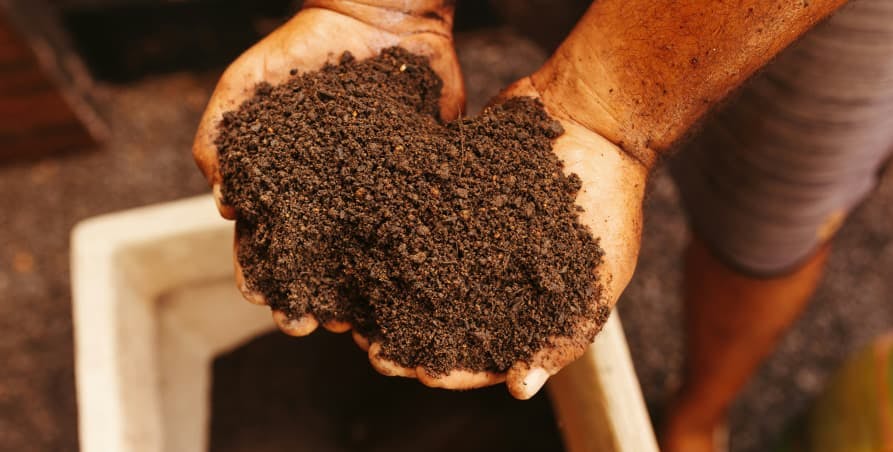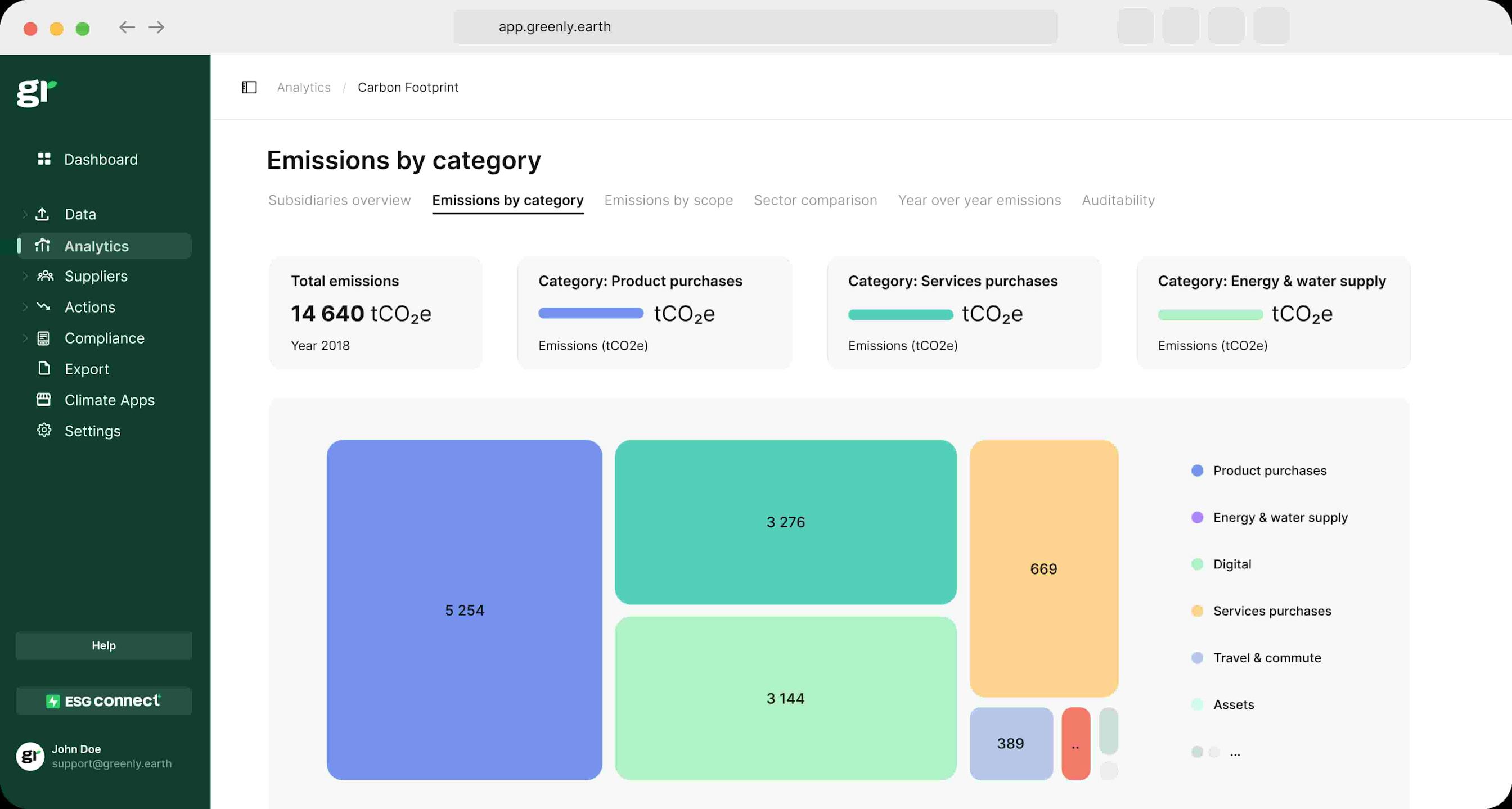ESG / CSR
Industries
Why is Carbon Essential to Life?



Whenever we think about carbon emissions in correlation to climate change, we often think of how detrimental carbon can be – but many people don’t realize why carbon is essential to life and that without it, many crucial systems would fall apart.
Carbon is essential to life due to its unique chemical properties, which serve as a foundational element for organic molecules and biochemistry.
In this article, we’ll provide an overview of why carbon is essential to life, how it is used, and what would happen without its existence.
Why are U.S. wildfires dangerous for the rest of the world?
The carbon cycle refers to the process of moving carbon between plants, animals, microbes, and even minerals on Earth and in our atmosphere – which helps to support the energy needs for multivarious organisms.
💡Think of the carbon cycle like a one-size-fits-all resource for living organisms, such as how we exhale carbon dioxide and plants utilize carbon in photosynthesis. Without plants, our food chain would be disrupted – leaving humans and other animals without food if carbon were to cease to exist.
How does the carbon cycle work?
The carbon cycle works to support life by transferring carbon across our:
- Atmosphere
- Oceans
- Soil
- Plants
- Animals
- Minerals
- Microbes
👉 Serving as the fourth most abundant element in the universe, carbon possesses a unique ability to help form complex molecules – such as DNA and structural proteins to help sustain life on Earth.
The carbon cycle works by recycling itself as it travels throughout different organisms and ecosystems. The amount of existing carbon we have on the planet has not changed, only its form – such as how it can be found in the air and then suddenly be absorbed by the ocean.
In a sense, the carbon cycle is a way for the world to reuse carbon atoms – such as how carbon is stored in rocks, sediments, the ocean, and other living organisms. These can often be referred to as carbon sinks, and while carbon is essential to life – adding excess carbon back into the atmosphere, such as from increased human activities, contributes to rising global temperatures and can disrupt the balance of carbon cycles in our ecosystems.

Why is the carbon cycle important to life?
The carbon cycle is important to life as it serves as a vital element in nature to aid in the development of DNA and proteins to support the development and continuation of life on Earth.
💡Carbon is crucial in helping to regulate the Earth’s temperature, allow organisms to thrive and reproduce, aid in agricultural development to grow food for our expanding population, and even in terms of our global economy as carbon serves as a major source of energy to fuel planes, cars, and machinery.
Here’s a breakdown of why carbon is essential to life:
- Versatility – As carbon is composed of four valence electrons, it allows carbon to form up to four bonds with other atoms – allowing for more diverse molecule structures. In addition to their dynamic and flexible nature, carbon’s covalent bonds are strong enough to endure essential biochemical processes.
- DNA & RNA – Without carbon, it would be incredibly difficult to form essential molecules to allow for reproduction, such as proteins and nucleic acids – otherwise known as DNA & RNA to help transport genetic information and help living organisms function.
- Compatibility with Other Elements – Carbon easily bonds with other readily available molecules, such as oxygen, hydrogen, or nitrogen – which helps to facilitate the development of essential DNA and proteins. In this sense, think of carbon as the friend that everyone gets along with that can help introduce you to even more friends and expand your social network.
- Supports Our Biosphere – If carbon were to fall off the face of the Earth tomorrow, so would we. This is because carbon is a vital component for all living things, such as how plants rely on carbon during photosynthesis to produce glucose.
👉 Ultimately, carbon is important as it serves as an indispensable and imperative element in our world – as carbon serves as the building blocks for every form of life on the planet.

How is carbon used in everyday life?
Unbeknownst to most, carbon is also used in many of our everyday activities – such as how carbon accounts for 18% of the human body.
Here are a few more examples of how carbon is used in processes besides helping to sustain life:
- Jewelry – Carbon, when pressurized into a diamond, is a form of carbon used in engagement rings – demonstrating how carbon is essentially to the jewelry market, valuing at $73 million USD in 2023.
- Carbohydrates – Bread, pasta, and other short-term forms of energy found in food are derived from carbon itself. Although many people dieting try to steer away from carbohydrates, the truth is that complex carbohydrates can help to supplement a meal, make you feel fuller, and provide immediate energy – such as before a workout.
- Industrialization – In addition to being used as jewelry, diamonds can be used for industrial processes – such as in construction and metalwork to cut through dense materials with greater accuracy.
- Daily Utensils – The graphite in your mechanical pencils, ingredients in various inks and paints, and even batteries make use of carbon.
👉 Overall, carbon not only helps to support life – but help us to live the modernized lives that we do, with carbon being utilized in industrial processes and even for enjoyment such as buying jewelry or eating a pastry.

What would happen to the planet if there was no carbon?
Essentially, if carbon disappeared tomorrow all living organisms on Earth could cease to exist, and at the very least – life as we know it today would be nearly impossible to sustain.
💡 This is because life is next to impossible without utilizing carbon, since it helps to develop DNA and RNA – both of which are essential for growth and reproduction in many living organisms.
Here’s a breakdown of what would happen if there was no more carbon:
Reduced Forms of Life
Since all living things on the planet are carbon-based, essential biological molecules would be unable to exist – making it more difficult for organisms to source energy from vital processes such as photosynthesis.
Both marine life and plant life would struggle to exist without carbon, as photosynthesis is contingent on carbon in addition to marine life depending on dissolved carbon to fuel their oceanic food chain.
Changes in Climate
Although excess levels of carbon dioxide emissions are undesirable in terms of air pollution, carbon helps to regulate the Earth’s climate – to the extent that without carbon, the planet would be too cold and not conducive to host life the way it currently does.
Furthermore, there would be no carbon cycle – which would also have an impact on the Earth’s current climate.
No Finite Energy Sources
Although it is imperative for all of us to transition to the use of renewable energy sources to aid in the fight against climate change, the truth is that finite sources of energy derived from carbon such as coal, oil, and natural gas still remain essential for transportation, electricity, and industrial processes.
This means that without carbon, there would be a noticeable impact on our global economy – and a struggle to power our daily activities.
The table below will depict how our atmosphere, wildfire, plants, oceans, and more would slowly dissipate if carbon were to be eradicated tomorrow:
If carbon were eradicated from Earth's systems tomorrow, it would profoundly affect every aspect of life and the environment. This table outlines how various components might dissipate over time:
| Component | Immediate Effects | Short-Term Effects (Days to Weeks) | Long-Term Effects (Months to Years) |
|---|---|---|---|
| Atmosphere | Rapid destabilization; oxygen and nitrogen remain but CO2-dependent cycles halt. | Temperature plummets as the greenhouse effect collapses. | Severe global cooling; weather systems become erratic or cease altogether. |
| Wildfires | Immediate cessation of combustion processes relying on carbon-based fuels. | Dead plant matter accumulates due to lack of decomposition. | Ecosystems dependent on periodic fires collapse. |
| Plants | Photosynthesis halts immediately without CO2. | Mass die-off of plants; disruption of food chains begins. | Loss of soil stability and desertification. |
| Oceans | Carbonate chemistry disrupted; marine life dependent on carbonates (e.g., corals) begins to die. | Mass extinction of marine species reliant on carbon compounds. | Oceans become inert, with drastically reduced biodiversity. |
| Humans and Animals | Immediate collapse of carbon-based metabolic processes in organisms. | Global food systems fail as plants die off. | Extinction of most species due to starvation and environmental collapse. |
| Fossil Fuels | All combustion-based energy sources become useless immediately. | Economic systems reliant on carbon-based energy collapse. | Shift to alternative energies (if possible) or societal regression. |
| Soil | Microbial activity halts without organic carbon. | Soil structure degrades; erosion accelerates. | Loss of arable land; landscapes turn barren. |
👉 Ultimately, nearly every aspect of life on Earth, from our oceans, plants, air, and all other ecosystems – would struggle to survive without carbon.

If carbon is essential to life, why are carbon emissions so harmful?
It can be easy to get confused between carbon, the element essential to life, and carbon emissions – otherwise known as carbon dioxide (CO₂) and methane (CH₄), which are harmful as they impact our natural systems and exacerbate
Here are a few reasons why carbon emissions are harmful:
- Greenhouse Gas Effect – CO₂ and CH₄ are both greenhouse gases that will trap heat in the Earth's atmosphere, which in addition to travel, industrialization, and deforestation will contribute to rising global temperatures, sea level rise, and melting glaciers.
- Ocean Acidification – Oceans absorb a whopping 30% of carbon dioxide, which in turn can lower the pH of the ocean and disrupt the aquatic food chain.
- Disrupts Natural Carbon Cycles – As carbon is stored in forests, oceans, and soil – excess carbon dioxide emissions from cutting down trees, wildfires, agricultural activities can further contribute to carbon build-up in the atmosphere.
How can we help protect the carbon cycle?
We can help to protect the natural carbon cycle, our ecosystems, and our planet by working to avoid the negative effects of climate change – such as by aligning our businesses with net-zero emissions by 2050, following emission reduction protocols, and adhering to all current environmental regulations.
Furthermore, Greenly can help your business identify areas to improve upon and ensure that your company doesn’t contribute to the dismantling of our natural, and essential carbon cycles.
What about Greenly?
If reading this article on why carbon is essential to life has inspired you to consider your company’s own carbon footprint, Greenly can help.
At Greenly we can help you to assess your company’s carbon footprint, and then give you the tools you need to cut down on emissions. We offer a free demo for you to better understand our platform and all that it has to offer – including assistance on how to reduce emissions, optimize energy efficiency, and more to make sure your business doesn’t create a negative impact on the carbon cycle.
Learn more about Greenly’s carbon management platform here.




